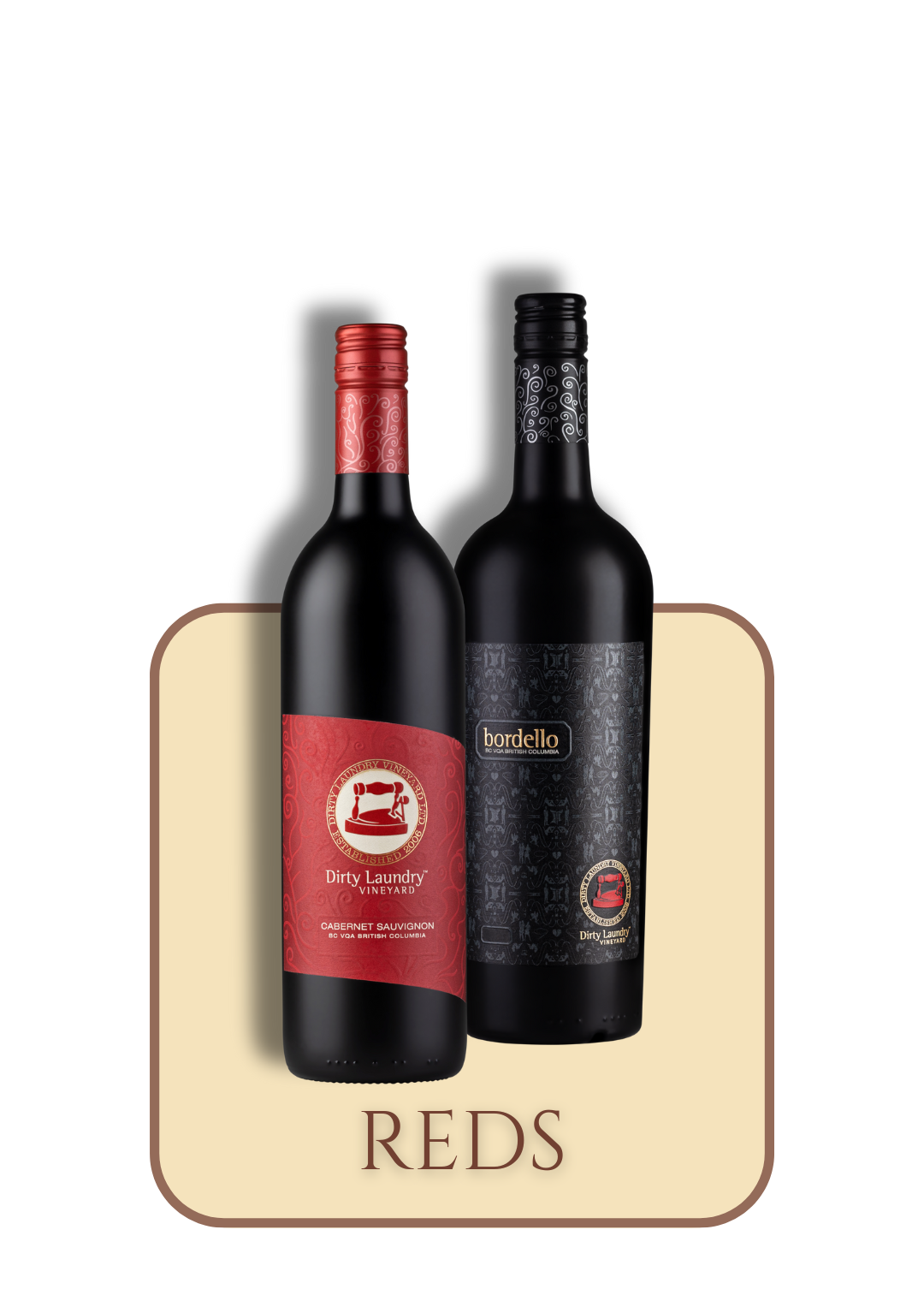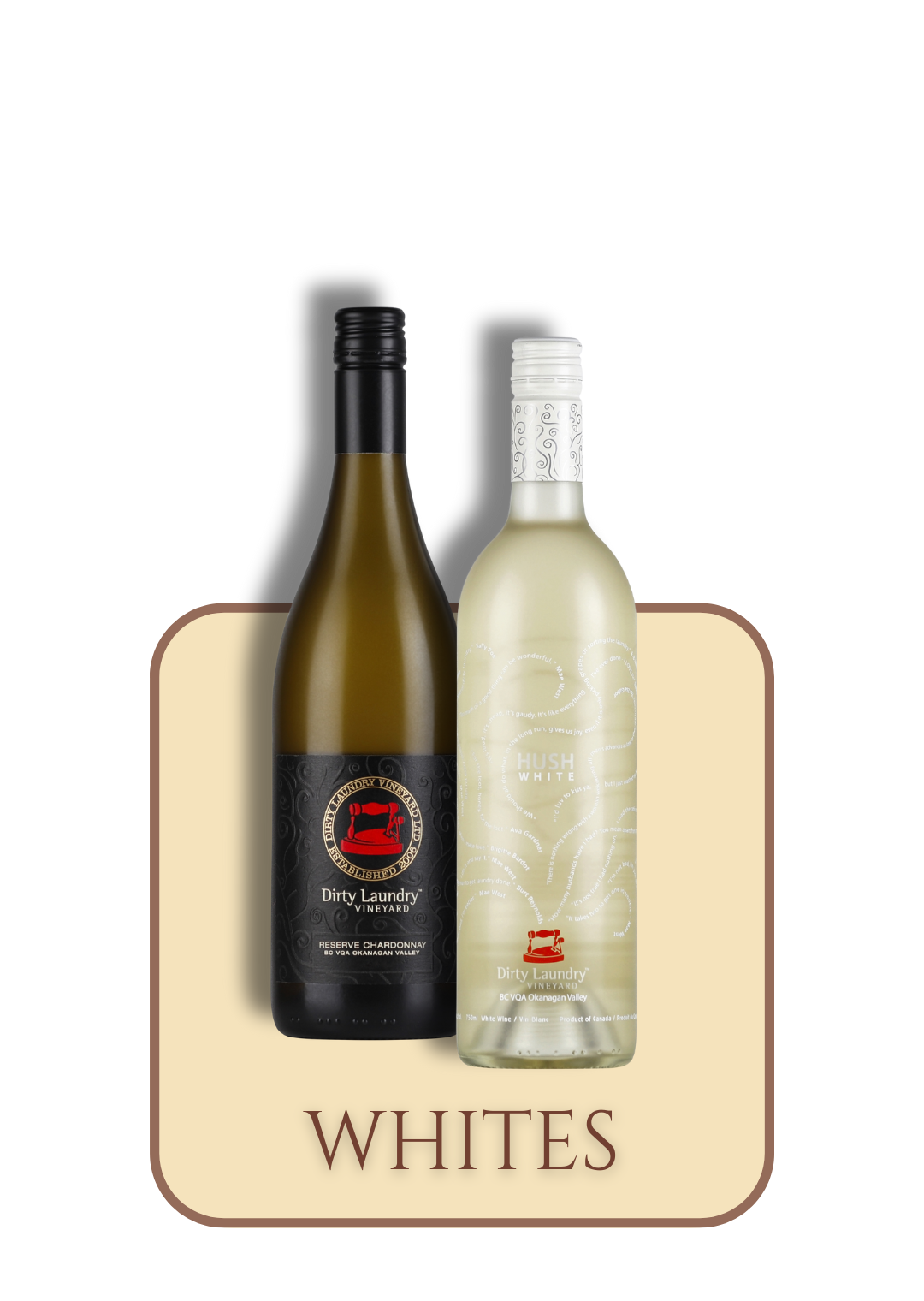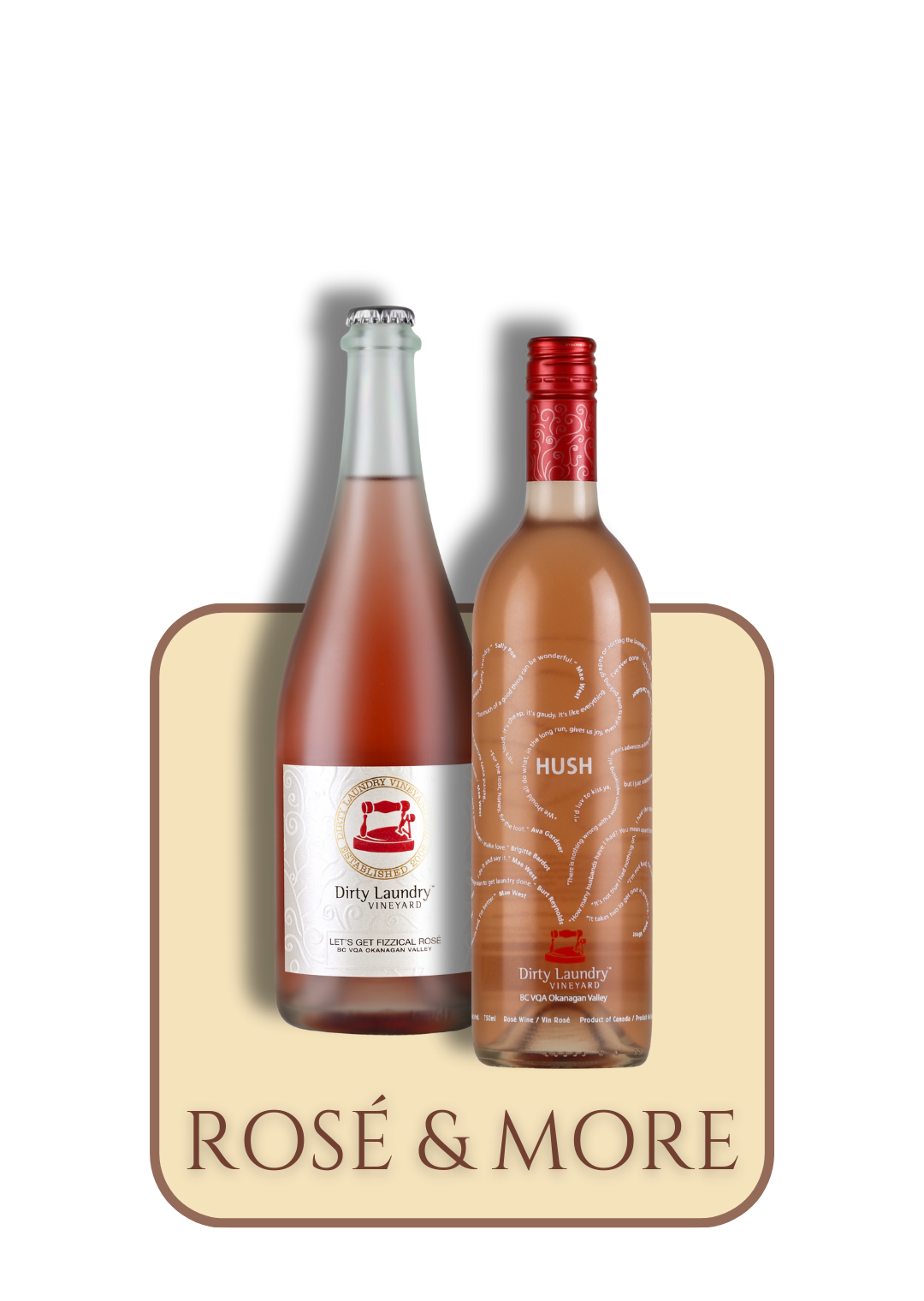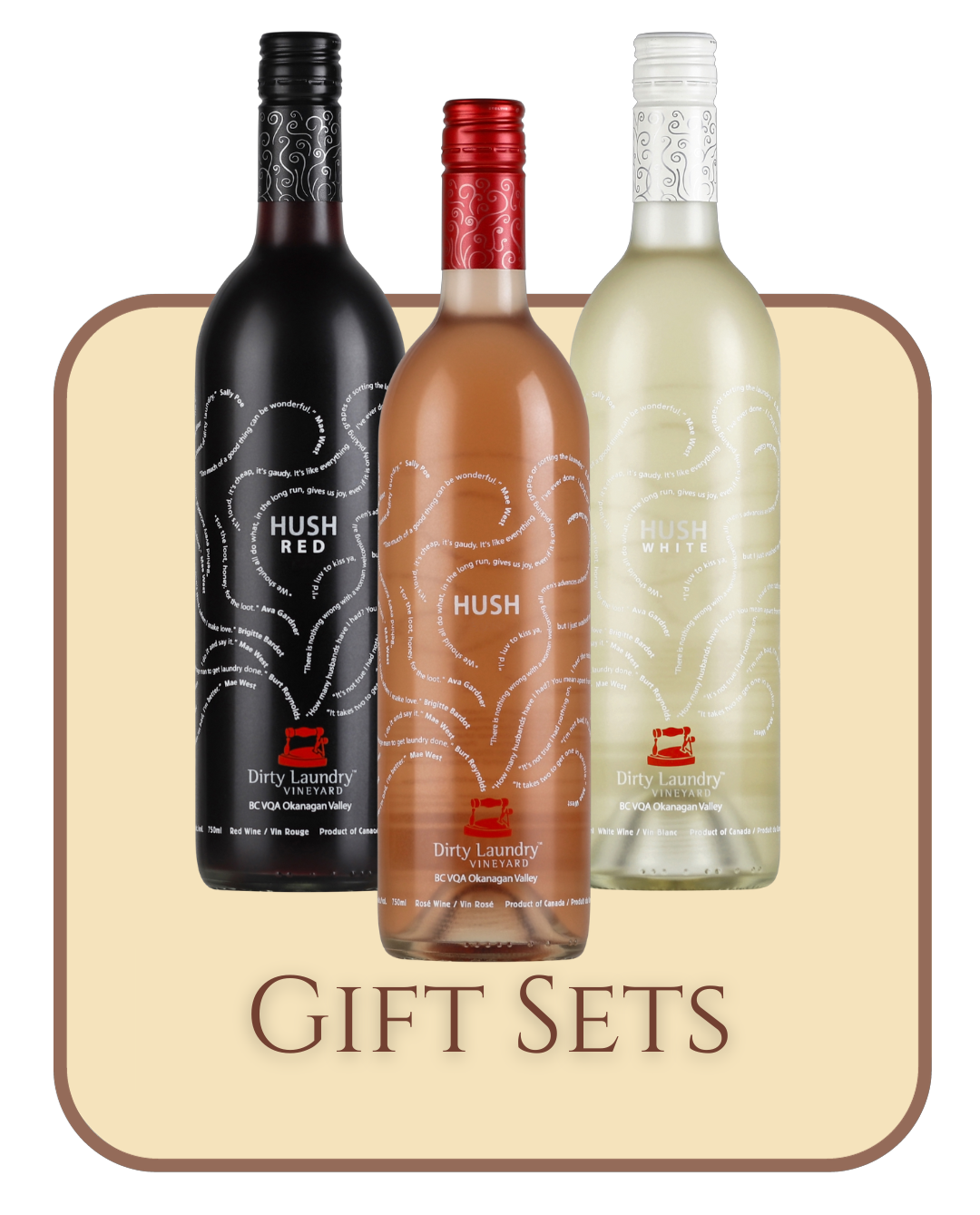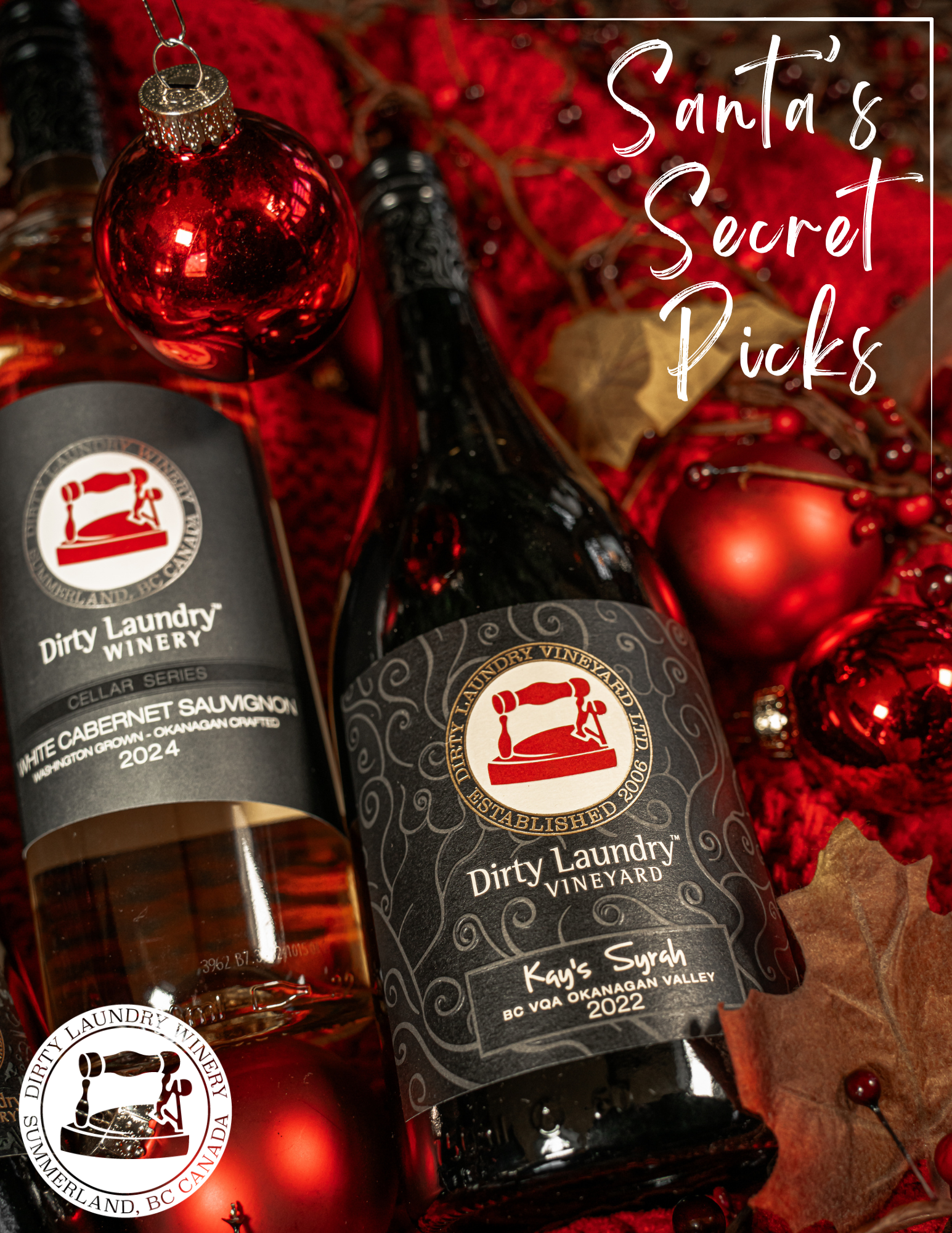
By Alia Etchison-Bone
•
November 13, 2025
Santa’s been sneaking around the cellars of the Great White North and he’s found some incredible gifts for wine lovers! He knows that few things spread cheer like the perfect bottle of wine or the right accessory to enjoy it. So whether you’re shopping for your favourite host, your wine-obsessed bestie, or simply treating yourself, these wine-inspired gift ideas will make the Holiday season merry and bright. 1. The Wine Wand by PureWine The Wine Wand is perfect for those who love wine but not the headaches or stuffiness it sometimes brings! This high-tech tool removes histamines and sulfites from wine without affecting flavour. Each wand is individually packaged and reusable for up to three glasses of wine — ideal for dinner parties or tastings. A brilliant stocking stuffer for wellness-conscious wine lovers. Tip: Bundle The Wine Wand with a set of elegant stemless glasses and a bottle of your favourite Dirty Laundry wine for a complete, ready-to-open gift. 2. A Sleek Wine Decanter Every wine lover deserves a beautiful decanter to elevate their experience. Decanting helps aerate wine, softening tannins and releasing aromas, which is especially important for young reds. For a touch of elegance, choose a classic crystal design, or a more modern style. Some decanters now feature integrated aerators that speed up the aeration process, letting you enjoy wine at its best within seconds of pouring. Check out last month's blog post for more information on wine decanting. Tip: Pair a wine decanter with a bottle of Dirty Laundry's red wine for an instant gift set. 3. Stainless Steel Wine Chilling Sticks No one likes a warm Chardonnay! A wine chilling stick that has been frozen for a couple of hours can be popped into a warm bottle of white wine to cool it quickly, without diluting flavour like ice cubes, or it can be inserted into a chilled bottle to keep it cold for an hour or so out of the fridge. Some wine chilling sticks even double as pour spouts and aerators. Multi-functional, but sleek! 4. Wine-Scented Candles Set the mood with a candle inspired by your favourite varietals like Pinot Noir, Rosé, or Sauvignon Blanc. These candles often use upcycled wine bottles and natural soy wax, making them both sustainable and fragrant. You could even make your own! Check out a recent blog post that highlights this and other gifts that can be made from reusing old wine bottles. 5. Wine Picnic Backpack For the wine enthusiast who loves outdoor adventures, a wine picnic backpack is a must. They come equipped with wine glasses, a corkscrew, napkins, and insulated compartments to keep your bottle perfectly chilled. Just add cheese and a view! 6. Electric Wine Opener Say goodbye to struggling with corks — an electric wine bottle opener makes opening bottles effortless. Electric wine openers have been around for a while, but depending on your budget, you can find all sorts of new features such as an automatic cork release which is perfect for those who open multiple bottles at a time! You can also find models with LED lights, foil cutters, and rechargeable bases. 7. Ice Mold Wine Chiller Dress up your dinner party table or create a memorable centre piece on the tables at your wedding with this customizable ice mold wine chiller. Get creative and freeze your favourite fruits, herbs, or edible flowers right into the mold for a stunning, personalized display. 8. Wine Glasses with Built-in Aerators Some wine glasses now come with built-in aerators that improve the wine’s flavours instantly. These glasses use a specially designed stem or bowl to agitate the wine as you swirl it, speeding up the aeration process without the need for additional equipment. 9. Wine & Chocolate Pairing Box Chocolate is a decadent accompaniment to a good bottle of red wine, and brings out the best flavours of both. The key lies in balancing sweetness and intensity — rich, full-bodied reds like Cabernet Sauvignon or Syrah pair beautifully with dark chocolate, as their bold tannins complement the chocolate’s bitterness and deepen its complexity. For milk chocolate, a softer, fruit-forward wine such as Merlot or Pinot Noir enhances the creamy sweetness without overwhelming it. Even dessert wines like Port can elevate a chocolate experience, adding layers of berry, spice, and warmth. When done right, the pairing creates a luxurious harmony where the wine’s depth and the chocolate’s richness meld into one irresistible treat. 10. Wine Club Membership Give the gift that keeps on giving! A membership to Dirty Laundry’s wine club comes with a whole host of benefits! Not only is it a fun way for wine lovers to discover new varietals without leaving home (our wine club members can customize 2-4 shipments a year of 6-12 bottles of wine depending on the wine club subscription purchased) but it’s a great way to take advantage of perks at the winery itself: The wine club member (and up to six guests) can receive a complimentary wine tasting every time they visit the winery. Only wine club members can make reservations to sit, eat and drink on our award-winning patio. We have exclusive, member's only parties on our patio during the summer months. If you’re looking for one of the items listed above or you simply want some stocking-stuffers for a loved one, the gift shop at Dirty Laundry is full of fun and unique wine-themed gifts. The boutique is open daily 11-5. So this year, why not skip the generic gifts and give the one thing we can all raise a glass to — good wine, good company, and a little Canadian cheer.
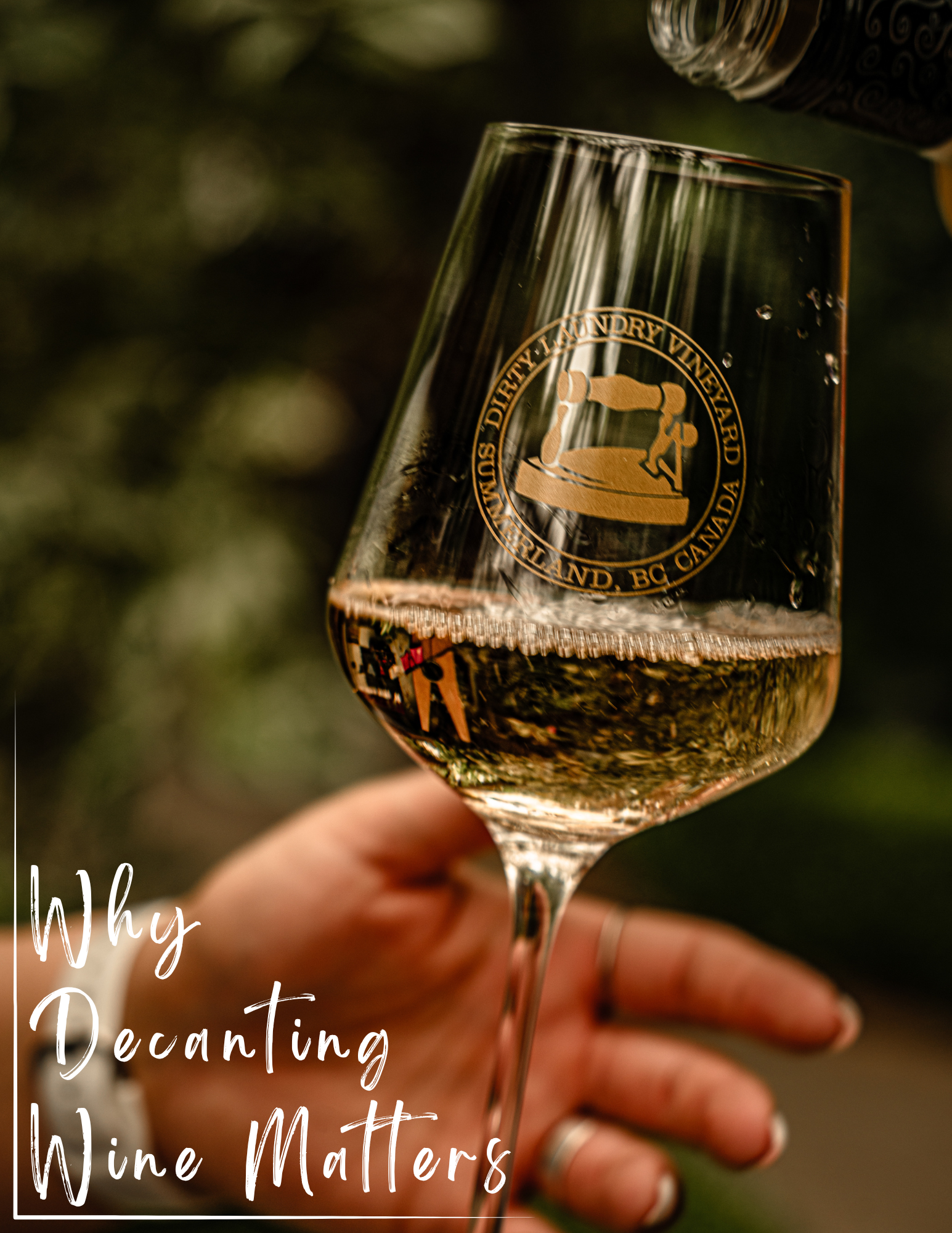
By Alia Etchison-Bone
•
October 16, 2025
If you’ve ever dined at a fine restaurant or visited a winery, you’ve probably seen someone slowly pouring wine into a fancy-looking glass vessel — a decanter. It might seem like part of the performance, but decanting is more than just flair. This time-honored ritual serves a real purpose in enhancing your wine experience. So, what exactly is wine decanting, and why do we do it? What is Wine Decanting? Decanting (from the Latin decanthare , meaning “to pour from the edge of a vessel”) is the process of transferring wine from its bottle into another container, a vessel usually made of glass or crystal designed to expose the wine to air. It is a practice that dates back to the Romans, who used bronze, silver, and clay vessels. Glass decanters only became common after the Venetians perfected glassblowing in the 17th century. While red wines benefit most, some white wines (like Chardonnay ) can open up with decanting. It’s not about changing the wine, but helping it show its best side. There are two main reasons we decant wine: To separate sediment. To let the wine “breathe.” In addition, a decanter is often used to enhance the presentation of the wine. Decanters often have elegant designs, making them a stylish way to serve wine at the table. 1. Removing Sediment As wine ages, especially red wines and vintage ports, natural sediments (like tannins and grape solids) can settle at the bottom of the bottle. These sediments are harmless but can add a gritty texture and bitter flavour if poured into your glass. By carefully pouring the wine into a decanter, you leave the sediment behind in the bottle. This is especially useful for older wines that have spent years resting in the cellar. 2. Letting the Wine Breathe The second — and often more common — reason to decant wine is aeration. When wine is exposed to oxygen, it softens the harsh edges, opening the wine up and releasing its aromas and flavours. Note that uncorking a bottle and letting it sit doesn’t aerate the wine much because the opening of the bottleneck is too small and not enough space exists in the bottle to introduce more oxygen to the wine. Simply put, breathing in the bottle is a myth and decanting is much more effective! How to Properly Use a Decanter for Both Young and Old Wines For young wines (generally under 5 years old), the goal is aeration — softening tannins and opening up aromas. How to do it: Open the bottle and pour the wine vigorously into a wide-bottomed decanter. In general, you should let the wine sit in the decanter for at least 30 minutes. Big, bold reds (like Cabernet Sauvignon , Syrah , or Malbec ) may benefit from longer (up to an hour). Even some everyday white wines and rosés can benefit from a short decanting, especially if they’re high in acidity or have been under screwcap and need a little oxygen to awaken. Taste as you go — once the wine smells and tastes more expressive, it’s ready to serve. For old wines (usually 10+ years old, especially reds), the goal is sediment removal and gentle aeration (too much oxygen can ruin fragile flavours). How to do it: Stand the bottle upright for a few hours (or even overnight) before decanting, so sediment settles to the bottom. In a dim light (a candle or flashlight works), slowly pour the wine into a decanter with a narrow neck, keeping the bottle angled so sediment stays behind. Stop pouring once you see sediment nearing the neck of the bottle — usually a small amount of wine is left behind. Serve the wine soon after decanting — very old or delicate wines can actually lose their character if left too long in a decanter, fading in as little as 30 minutes. When to Decant and When Not to Decant Use this quick reference guide to determine when you should decant wine, and for how long, and when decanting is not needed or recommended. When to decant: Young, bold, tannic reds (Cabernet Sauvignon, Syrah, Malbec) – decant for 1-3 hours to soften harsh edges and open aromas. Medium-bodied reds (Merlot, Zinfandel, Grenache) – a short decant (20–40 min) enhances fruitiness. Old reds with sediment (Bordeaux, Burgundy, Rioja, Barolo, Vintage Port) – a gentle decant of 10-30 minutes max just before serving to remove grit. Some whites & orange wines (Chardonnay, Viognier, natural/orange wines) – a quick decant of 15-30 minutes to release complexity. Closed or “tight” wines (any wine that smells muted or tastes flat at first sip) – oxygen helps bring it alive. When not to decant: Delicate, very old wines (20+ years) – may fade quickly; only decant right before serving if needed for sediment. Light-bodied reds (Pinot Noir, Gamay/Beaujolais, many natural wines) – often lose nuance with too much air. Most sparkling wines (Champagne, Prosecco, Cava) – decanting robs them of bubbles (except rare cases where sommeliers use it to soften aggressive fizz). Already “open” wines – if aromas leap out immediately after pouring, decanting isn’t necessary. Do You Need a Fancy Decanter? No. While elegant glass decanters can enhance the experience, the main goal is exposing wine to air. If you don’t have a decanter, you can pour wine into any clean glass jug or pitcher, pour it back and forth between two containers, or even swirl it in your glass. These methods can achieve some of the same effects without a decanter. That said, a well-designed decanter adds a touch of ritual and style to the moment — and for many wine lovers, that’s part of the joy. Wine decanters come in many shapes and sizes: Wide-bottomed decanters maximize oxygen exposure, which is great for young wines. Narrow, tall decanters are better for delicate older wines where too much oxygen could harm the flavour. Final Thoughts Decanting is a small step that can make a big difference in how a wine tastes and feels. Whether you’re opening a special aged bottle or just elevating your weeknight red, taking a few minutes to decant can unlock a more expressive, enjoyable wine experience. So, next time you open a bottle, give it some air — your taste buds will thank you.

By Alia Etchison-Bone
•
September 19, 2025
There’s something truly fascinating about harvest season in the Okanagan’s wine country. As summer fades into fall, vineyard-covered hills come alive with vibrant colour, and orchards are buzzing with activity. What is not so visible is the journey happening behind the scenes — a process that transforms humble grapes into the wine we love. 1. The Countdown to Harvest Despite what you might think, harvest season doesn’t begin with picking. All year long, vintners have carefully tended to their vines: pruning in the winter, managing canopy growth in the spring, and protecting clusters in the summer. The Okanagan valley’s diverse microclimates mean that harvest timing varies widely depending on location and grape variety. Many of the red grapes used in Dirty Laundry’s wine are sourced from arid vineyards in the hotter climate of Osoyoos and Oliver, BC. We work with several growers in the South to source red grapes that need some more heat and sunshine to fully develop. The grapes used in our white wines vary in location. Our Hush White blend, for example, uses grapes from the Yakima Valley in Washington, whereas our Madam’s Gewurtztraminer sources 100% of its grapes from Summerland, BC. Wherever the grapes are grown, typically by late August to early October, winemakers are walking rows daily, tasting berries and checking sugar levels, acidity, and ripeness, testing them in the lab to decide the perfect moment to pick. This is a delicate balance: too early and the wine may lack flavour; too late and the grapes may lose acidity or become overripe.This isn’t just about numbers—it’s about instinct, history, and experience. 2. Picking with Purpose When the grapes hit that sweet spot, it’s time to harvest. Depending on the winery, this might be done by hand (ideal for preserving delicate grape skins and ensuring quality) or by a grape harvester machine for efficiency. At Dirty Laundry, we pick all of our locally grown BC grapes by hand, allowing us to be selective and ensuring only the best fruit makes it to the crush pad. Grapes are typically picked early in the morning (around 6am) to preserve freshness and prevent unwanted fermentation from starting too soon—critical in our valley where daytime temperatures can still be surprisingly warm in early fall. But weather can change quickly here (with frost sometimes just around the corner), so there’s often a race against time. One cold snap can change everything. 3. From Bins to Crush Once picked, the freshly harvested grapes are rushed to the winery’s crush pad where they are received and prepared for fermentation. Grapes arrive from the vineyard and are weighed, then cleaned of leaves, stems, and damaged fruit by hand or machine. Stems are removed, and grapes may be gently crushed to release juice. White varietals like Riesling , Pinot Gris , and Chardonnay are typically pressed immediately to preserve their crisp, clean character. The juice (and skin for red wine) is collected. This is the wine “must”. Red grapes such as Merlot , Cabernet Sauvignon , and Syrah are left to ferment on their skins to extract deep colour, flavour and tannins. Juice or must is pumped or moved to fermentation tanks. This is where the transformation from fruit to wine begins. The crush pad is key to maintaining grape quality and setting the stage for successful winemaking. 4. Fermentation: Where the Magic Happens Fermentation is the heart of winemaking. Natural or added yeasts convert grape sugars into alcohol and carbon dioxide. This can take anywhere from a few days to several weeks, depending on the style of wine. Winemakers closely monitor temperature, perform cap management for red wine up to twice daily, and taste constantly to guide the process. Cap management is the process of handling the “cap” (made up of grape skins, seeds, and stems that rise to the top of the fermenting must due to carbon dioxide released during fermentation) and ensuring the cap keeps in contact with juice. This helps to retain the red colour of the wine, and ensures full flavour development as the grape skin contributes to complex aromas. Additionally, a dry, undisturbed cap can lead to bacterial growth, so proper cap management is essential. The frequency of cap management depends on grape variety, desired wine style (e.g., bold vs. soft), fermentation temperature, and winemaker preference. 5. Aging and Maturation Once fermentation is complete, wines are pressed (if red), clarified, and moved into tanks or barrels to age. Oak barrels may lend flavours like vanilla, spice, or toast, while stainless steel preserves fresh, fruity notes. During this time—anywhere from a few months to several years—wines soften, integrate, and develop complexity. The aging process differs significantly between red and white wines. Our 2022 Cabernet Sauvignon for example, was aged for 15 months in oak barrels with 75% French and 25% American. In processing we crushed and destemmed the grapes, then left them to cold soak for a day before fermentation was initiated. To make our 2024 WooWoo Gewurtztraminer , half of the fruit was cold-soaked on the skins before being pressed into stainless steel tanks, where it underwent spontaneous fermentation. The other half was crushed, destemmed, and pressed directly into the tank, where it was cold-settled, then racked and inoculated for a cool fermentation to preserve varietal character and aroma. The aging process here is influenced by the valley’s natural elements—cool nights, clean air, and a slower pace that lets the wine develop with balance and finesse. 6. Bottling the Story When the winemaker decides the wine is ready, it’s filtered (if needed), bottled, and sealed. Some wines are released quickly, fresh and vibrant. Others are laid down in cellars to evolve. But each bottle tells the story of that vintage—its weather, its vineyard, and the care that went into it. Was it a hot, dry year producing bold reds? Or a cooler vintage with elegant acidity? 7. From Glass to Experience Finally, that wine finds its way to your table. Whether you're sipping a chilled Hush Rosé on a lakeside patio in Kelowna or cozying up with a glass of Malbec by the fire in Naramata, you’re tasting more than just wine. You’re tasting the result of months (and sometimes years) of craft and care—all sparked by the simple act of harvesting grapes at just the right time. Many Okanagan wineries open their doors during harvest for tastings, events, and tours. If you visit during this special season, you might just catch a glimpse of grapes being crushed or barrels being filled, offering a behind-the-scenes look at winemaking in action. So the next time you raise a glass, take a moment to toast the journey from vine to bottle that made it possible.


